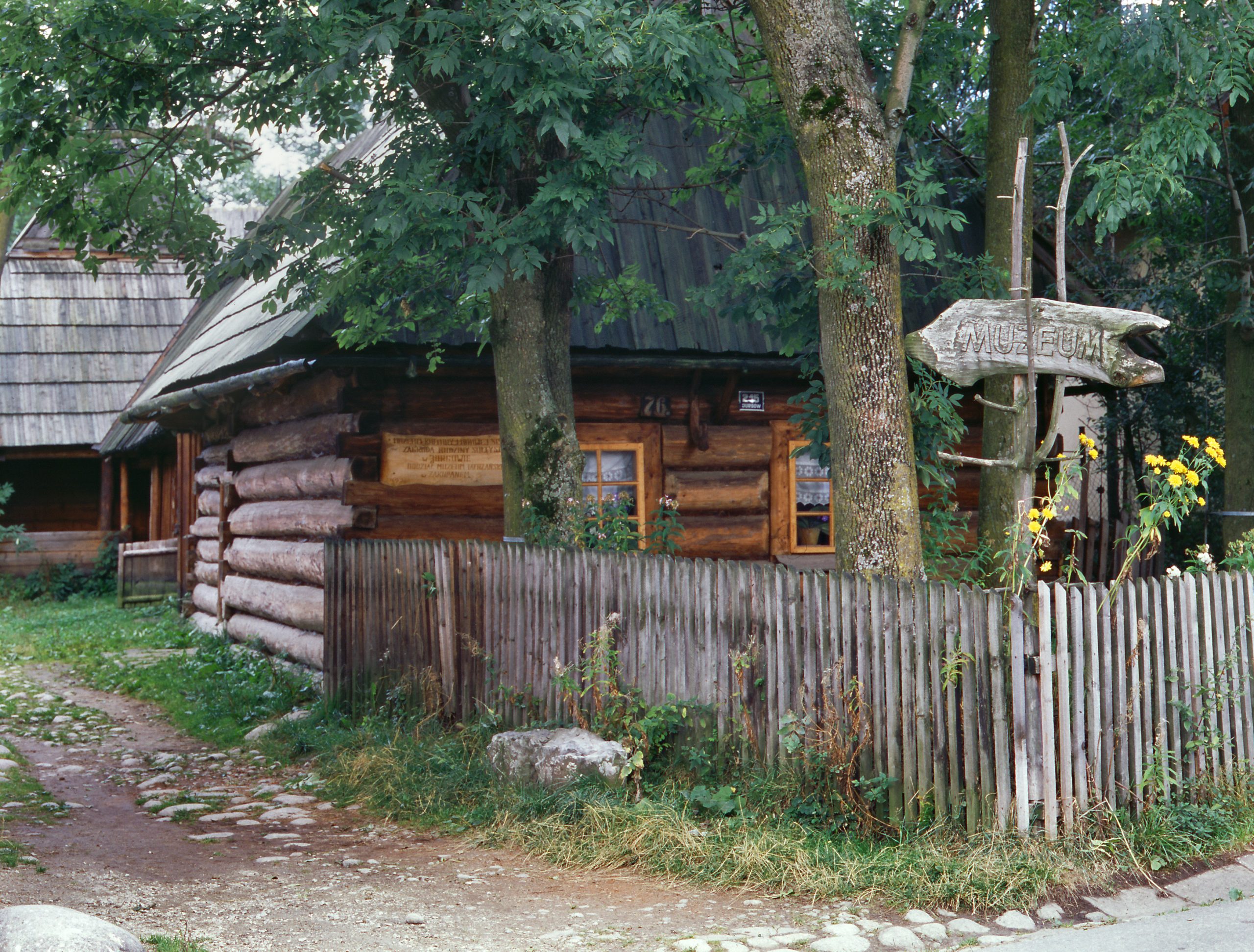Prices:
normal ticket 10,00 zł
reduced ticket 6,00 zł
guided tour: 30,00 zł
large family card : 3,00 zł
max. 2 adults + max. 4 minors: 20 zł
group > 15 p. + 1 adult for free: 5,00 zł
audio guide: 5,00 zł
free entry every Sunday
Opening hours:
WED - SUN 10.00 AM - 4.00 PM
MON - TUE - closed
ATTENTION!
On February 1-5, 2023 the branch is closed!
Address:
34-532 Jurgów

(branch of the Tatra Museum)
Jurgów is the south-westernmost village in Polish Spisz. Among its densely arrayed houses, one can find a small number of relics of Spisz wooden architecture in addition to brick houses with decorated façades typical of the region.
The earliest documents where the village features under its Hungarian name, Gyurgowa, come from the 18th century. The location of the village, its severe climate, not propitious to the cultivation of land and the vicinity of the Jaworzyńskie range of the Tatra Mountains determined the living conditions of the population. The main source of sustenance here was shepherding. The villagers herded flocks in the mountain pastures and clearings of a huge estate in the Jaworzyńskie Tatra Mountains. In 1848, on the strength of the affranchisement decree, they were made owners of the pastures used. In the second half of the 19th century, however, their mountain pastures and mountain-foot clearings became part of Prince Christian Hohenlohe’s estate, which was being integrated, in exchange for which the owners received pastures in the vicinity of their villages. The Podokólne clearing went to the villagers of Jurgów. Today we may see here shepherds’ sheds that the shepherds transported to the spot over a century ago from the clearings in the Jaworzyńskie Tatra Mountains.
The Sołtys croft was built in 1861 by the great-grandfather of the last owner, Jakub Sołtys. Then members of the successive generations of the family inherited the croft. After World War II, part of the family moved to a newly built house while the Tatra Museum purchased the old croft in 1982 with a view to putting on an ethnographic exhibition here. In contrast to the rich Korkosz Croft in Czarna Góra, the cottage and the farm buildings making up the Sołtys Croft are an example of a poor turn-of-the-century Spisz farm.
The wooden croft is composed of a home with farm buildings laid-out in sequence under the same roof. In the dwelling section, we have a vestibule, chamber and komora (larder). Built of logs, the vestibule, which contains a chest for storing the grain, stave vessels used in shepherding for carrying water and for carrying and storing milk plus utensils necessary around the croft, leads to the chamber. There is only one chamber in the Sołtys Croft. Here the family slept, prepared their meals and entertained guests. The chamber walls are made of logs cut into halves, planed inside and roughly hewn outside. Beneath the ceiling runs the main beam with a carved date of the completion of the building and a rosette motif. The modest furniture includes a stove which once had an open range with iron tripods used for cooking, a bed, a shelf where pots and pans were kept, benches and a table with, hanging above it, pictures on glass later replaced with chromolithographs. Other embellishments of the chamber are small wall hangings, and so is ornamented pottery put up above the table. Rods suspended above the bed and near the stove act as wardrobe.
The farm buildings comprise a woodshed, a sheepfold, a threshing-floor and a stable. All are built of spruce logs, with the roof covered with lathing. The woodshed was used for storing wood and keeping a sledge, and often also weaving implements not used in the summer. The sheepfold could house almost thirty sheep. The tool used for threshing was the flail; certain stages of flax processing also took place on the threshing-floor.
In the chamber, Jurgów costume of the late 19th/early 20th century, now unique, is on display. The clothes assembled inside the poor croft illustrate how the villagers, both the richer and the poorer, dressed.
There are several varieties of Spisz costumes; each in itself quite varied. The villagers of Jurgów, Czarna Góra and Rzepiska wore what ethnographers describe as the Jurgów variety. The traditional outfit largely depended on natural, home-manufactured materials, wool, linen and leather. With two fulling-mills in the past, Jurgów was well known as a weaving centre where woollen fabric was made of worsted yarn, and canvas and thin tulle-like fabrics of very thin linen yarn. Some elements of the costume, especially those intended for women, were factory-made. Of these, the red woollen cloth, of which the rich highlanders’ wives made their skirts and bodices, was very popular. Mass-produced cotton fabric and silk were also bought, as well as brocade for caps and bodices. With its well-developed textile industry, Kieżmark was the place for buying decorative accessories and haberdashery.
The typical male outfit, initially rather modest, consisted of a home-spun linen shirt, white woollen cloth pants, a russet cloth overcoat, a sheepskin coat, a sleeveless jacket and a wide leather belt. As time went on, the outfit grew richer in embroidery and other decorations. The best men wore interesting embellishments on their hats made by bridesmaids of pieces of straw, red woollen cloth and goose feathers.
The Jurgów costume collection illustrates how the local costume changed with the changing circumstances. Today, on the occasion of church holidays and family celebrations, the villagers more and more often put on Spisz costumes made according to traditional patterns.


